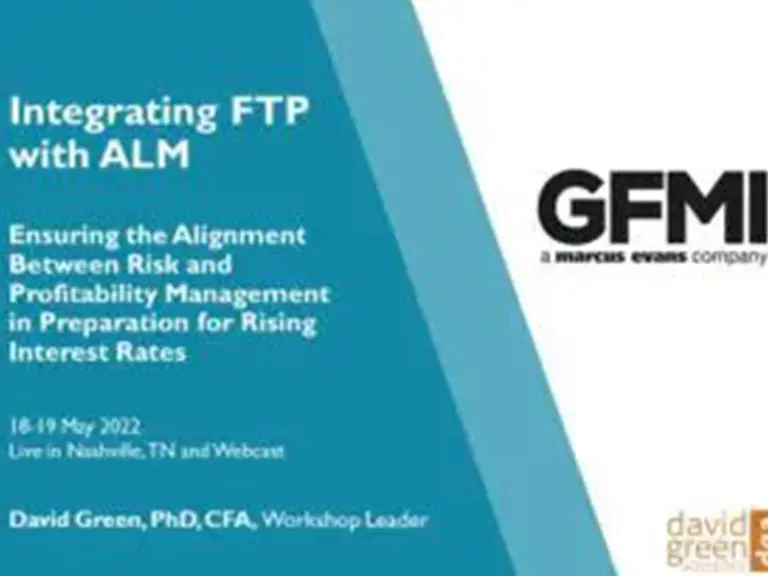
FTP ALM Workshop May 2022: Live in Nashville and Webcast
After two very long years of Covid-motivated webcasts, DGA is excited to announce the return of our live, in-person workshops. We have desperately missed these events and cannot wait to be back in front of a live audience. We are returning with our course on the integration of FTP and ALM which will be held in Nashville, TN (our new home) on May 18th-19th. For those unable to attend in person, the workshop will also be webcast.
For the first time in almost two decades, interest rates are poised to rise quickly and significantly. The last time this happened, from 2004-6, the Fed Funds rate was raised by 425 bps; a severe financial crisis ensued which saw the failure of almost 500 banks. While financial institutions are thought to be considerably stronger with regard to the sufficiency of capital and liquidity, we cannot help but ponder their preparedness for interest rate risk. After almost 15 years with interest rates at or near zero, there is a new generation of bankers and risk managers who have never worked in a high interest rate environment, much less been asked to navigate their institutions through a rapid transition from low rates to high rates. Are there organizations truly prepared for what is to come?
Most banking organizations continue to be challenged in their efforts to coordinate risk and profitability management exercises; more specifically, the contribution of interest rate risk and liquidity risk to the earnings story continues to be ignored. Regulators have yet to compel banks to make this critically important connection. Excepting OCC 2016-7a, which is only applicable to banks with total assets in excess of $250 bln, there is no requirement that a bank properly attribute some portion of earnings to interest rate and liquidity risk. In practice, these sources of earnings are usually misattributed to lending (more so) and deposit gathering, leading to an overestimate of their contribution to total earnings.
When the true source of earning is not understood, during periods of economic volatility, confusion will reign. Products which were anticipated to be profitable will suddenly appear not to be. The search for reasons will eat up valuable time and resources which are otherwise needed to deftly manage the change in the economic environment.
In this timely workshop, we discuss the requirements for an integrated risk and profitability management framework which will always provide clarity around the sources of earnings, much needed clarity during periods of economic upheaval.
For more information about the workshop, see Integrating FTP with ALM: Ensuring the Alignment Between Risk and Profitability Management.
Delegate testimonials can be found here and if you have any questions, please feel free to send me a message.
I hope to see you soon.
